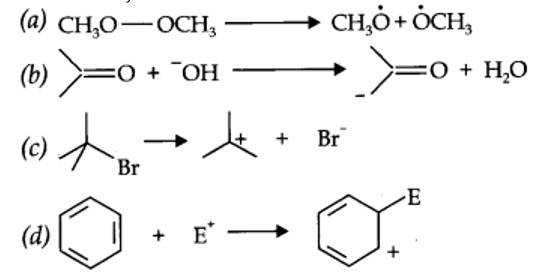Organic Chemistry - Some Basic Principles and Tech
Get insights from 110 questions on Organic Chemistry - Some Basic Principles and Tech, answered by students, alumni, and experts. You may also ask and answer any question you like about Organic Chemistry - Some Basic Principles and Tech
Follow Ask QuestionQuestions
Discussions
Active Users
Followers
New answer posted
7 months agoContributor-Level 10
(a) Crystallisation: In this process the impure solid is dissolved in the minimum volume of a suitable solvent. The soluble impurities pass into the solution while the insoluble ones left behind. The hot solution is then filtered and allowed to cool undisturbed till crystallisation is complete. The crystals are then separated from the mother liquor by filtration and dried.
Example: crystallisation of sugar.
(b) Distillation: The operation of distillation is employed for the purification of liquids from non-volatile impurities. The impure liquid is boiled in a flask and the vapours so formed are collected and condensed to give
New answer posted
7 months agoContributor-Level 10
Inductive effect: The inductive effect refers to the polarity produced in a molecule as a result of higher electronegativity of one atom compared to another. Atoms or groups which lose electron towards a carbon atom are said to have +I Effect. Examples of +I effect are (Electron releasing)
(CH3)2C—, (CH3)2CH—, CH3CH2— CH3— etc.
Those atoms or groups which draw electron away from a carbon atom are said to have -I Effect. Examples of -I effect are:
NO2, F, Cl, Br, I, OH etc.
Electromeric effect: The electromeric effect refers to the polarity produced in a multiple bonded compound as it is approached by a reagent.
The atom A has lost
New question posted
7 months agoNew answer posted
7 months agoContributor-Level 10
(a) They are structural isomers. The given compounds have the same molecular formula but they differ in the position of the functional group (here ketone group: first one at C-3 and second one at C-2 positions).
(b) They are geometrical isomers. Compounds having the same molecular formula, the same constitution, and the sequence of covalent bonds, but with the different relative position of their atoms in space are called geometrical isomers.
(c) They are resonance contributors because they differ in the position of electrons but not atoms.
New answer posted
7 months agoContributor-Level 10
(a) Nucleophilic substitution (b) Electrophilic addition
(c) Bimolecular elimination (d) Nucleophilic substitution with rearrangement.
New answer posted
7 months agoContributor-Level 10
(a) Here, HO– acts as a nucleophile as it is an electron-rich species, i.e., it is a nucleus-seeking species.
(b) Here, –CN acts as a nucleophile as it is an electron-rich species, i.e., it is a nucleus-seeking species.
(c) CH3C+O acts as an electrophile as it is an electron deficient species.
New answer posted
7 months agoContributor-Level 10
Electrophiles: The name electrophiles mean electron loving. Electrophiles are electron deficient. They may be positive ions or neutral molecules.
Ex: H+, Cl+, Br+, NO2+, R3C+, RN2+, AlCl3, BF3
Nucleophiles: The name nucleophiles means 'nucleus loving' and indicates that it attacks the region of low electron density (positive centres) in a substrate molecule. They are electron rich they may be negative ions or neutral molecules.
Ex: Cl– Br–, CN–, OH–, RCR2–, NH3, RNH2, H2O, ROH etc.
New answer posted
7 months agoContributor-Level 10
Due to hyperconjugation, alkyl groups act as electron donors when attached to a π - system as shown below:

New answer posted
7 months agoContributor-Level 10
Nitroethoxide ion (O2NCH2CH2O–) is more stable than ethoxide ion (CH3CH2O–) due to -I effect of nitro group which decreases the negative charge of oxide ion of nitroethoxide ion leading to stability. In contrast, CH3CH2 has +I-effect. It, therefore, tends to intensify the -ve charge and hence destabilizes it.
New question posted
7 months agoTaking an Exam? Selecting a College?
Get authentic answers from experts, students and alumni that you won't find anywhere else
Sign Up on ShikshaOn Shiksha, get access to
- 65k Colleges
- 1.2k Exams
- 681k Reviews
- 1800k Answers





